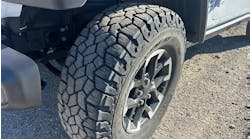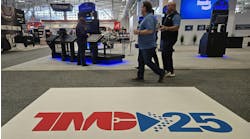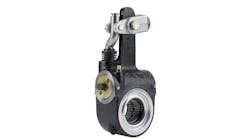The case for internal tire balancing
Many economic downturns in the past have forced trucking companies, fleet managers, and owner operators to find ways to adapt and cut costs in order to keep their business afloat. The one we are currently facing is no different. When these periods occur, many in the industry take a step back from the day-to-day operations and look at what cards they have in their deck to help their business weather the storm.
If you stay up to date with industry news, you probably have a good idea of what solutions exist on the market to help cut costs. But if you take time to further analyze these solutions, you will realize that there are some “low hanging fruit” improvements that can be made. Take, for instance, switching to internal tire balancing. This solution does not require significant investment, it is easy to implement, and it can generate a rapid return on investment.
Considering internal tire balancing
While most maintenance personnel are already familiar with internal tire balancing, some may still question whether it can make a difference for their fleet. The benefits that come with the continuous balance that it provides, however, are well known: internal balancing can extend tread life, improve fuel efficiency, and reduce maintenance costs.
There are few barriers to implementing internal tire balancing; it is easy to install and no staff training or reorganization of maintenance processes is required. It also does not cost a lot. In other words, it checks a lot of the boxes for what constitutes a “low hanging fruit” type of improvement.
If your fleet has considered internal balancing for a while but has not tried it yet, this may be a good time to see for yourself by testing it on one of your vehicles.
Choosing an internal tire balancing product
If you are not familiar with internal tire balancing products, a quick search will help you realize that there is no shortage of options (glass or ceramic beads, powders, granules, liquids, etc.). “Which product should I try and why?” will undoubtedly be the next question you will ask. When making this decision, there are two important factors to keep in mind when evaluating the different alternatives.
Performance inside the tire
The concept of internal tire balancing is based on the premise that the product will continuously adapt to the heavy spots that form around the tire. Heavy spots can form when a vehicle operates on different types of roads or surfaces. Matter such as gravel, mud, or snow can stick or stay caught in the tread grooves or in the wheel hub, and then goes away, which creates unbalance.
Uneven tire wear can also be a source of heavy spots. If the internal balancing product cannot move freely within the tire and, for that reason, cannot disperse itself properly to compensate for these unbalances, it simply will not be as efficient. Products that are not perfectly round, that are made of a material that absorbs moisture or allows static buildup, that freeze, clump, or stick together, or that break into fine particles over time will see their performance affected as a result.
When it comes to tire balancing beads specifically, large tempered glass beads, such as those offered by Martins Industries’ MAGNUM+, tend to move more independently from one another, leading to better performance. This is due in part to their shape and size, the fact that they are free of coatings, and that they are unbreakable.
Compatibility with the tire
When spec’ing an internal balancing product, it is important to ensure it will not void the tire manufacturer’s warranty and that it will not damage the tire from the inside. Materials that react with the inner lining of the tire, that deteriorate, or that can break can potentially damage the tire. Also, take time to verify that the product is compatible with any component or technology that is used with the tire (valves, TPMS, CTIS, etc.).
Look for proof of performance
Depending on the fleet, there are other factors that will weigh into the decision of which product and what brand to choose, such as available formats, cost, ease of ordering, delivery time, and after-purchase service, but the factors outlined above are the most important to consider from a product performance standpoint.
If results on the bottom line are important to your fleet, adopting a balancing compound that has already proven its performance and safety will be the best bet.
Isabelle Olivier is the marketing manager at Martins Industries, manufacturer of the original tempered glass tire balancing glass beads. Martins Industries designs, manufactures, and distributes tire racks, equipment, and supplies.




